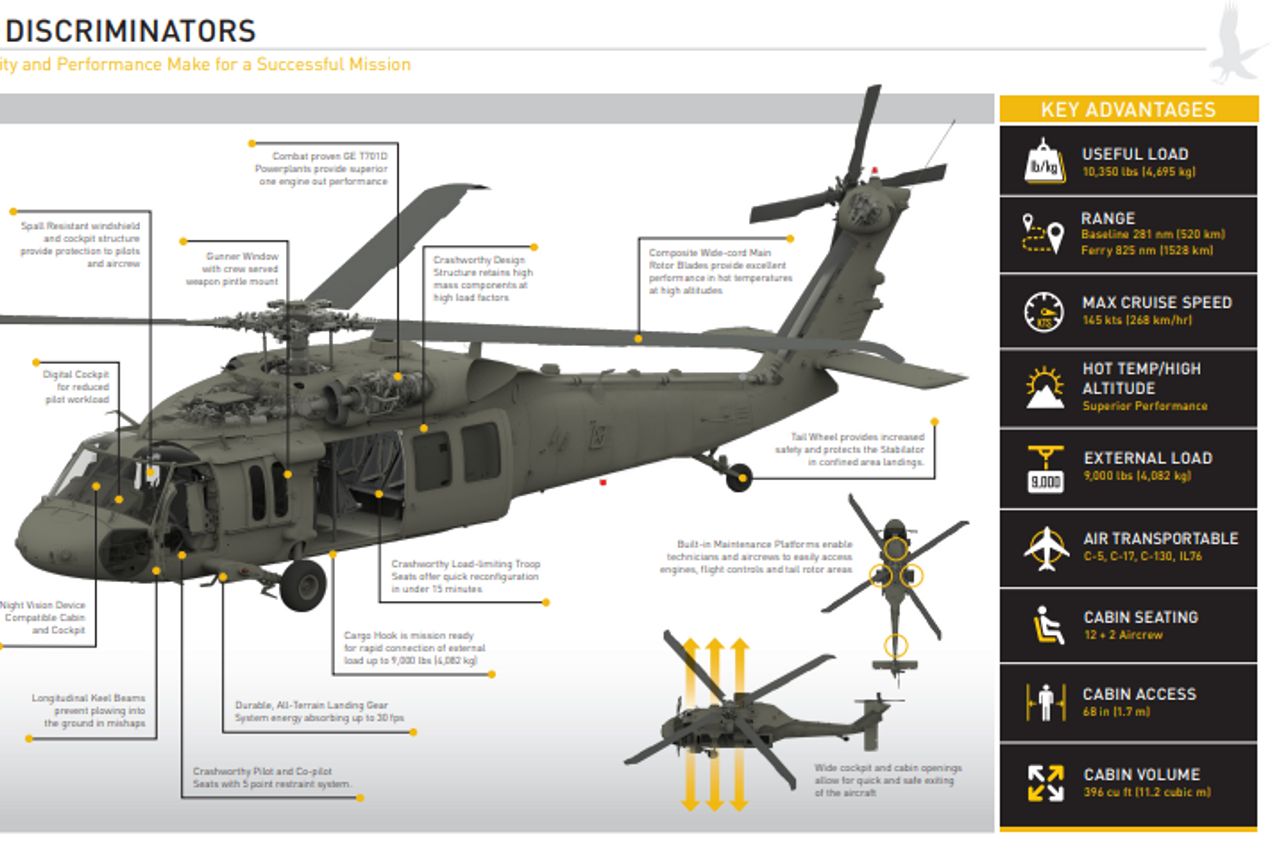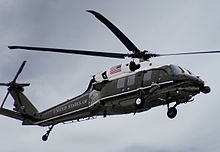Inside the Sikorsky S 70: What Sets This Helicopter Apart from Its Competitors
Inside the Sikorsky S 70: What Sets This Helicopter Apart from Its Competitors
Blog Article
High-Performance Multi-Role Rotorcraft Featuring Advanced Cabin Technologies and Integrated Sensing Unit Systems
The realm of rotorcraft technology has actually seen remarkable advancements in recent times, especially in the realm of high-performance multi-role rotorcraft equipped with innovative cockpit modern technologies and effortlessly incorporated sensor systems. In the following conversation, we will discover the advancement of rotorcraft modern technology, dig right into the realm of sophisticated cabin developments, and check out the effects of incorporated sensing unit systems on the functional flexibility and effectiveness of contemporary rotorcraft.
Development of Rotorcraft Technology
The advancement of rotorcraft technology has actually been noted by significant innovations in aerodynamics, products, and propulsion systems, shaping the capabilities and efficiency of modern-day rotorcraft. Aerodynamic improvements have enhanced the performance and ability to move of rotorcraft, allowing for increased speed, dexterity, and security throughout trip (sikorsky s 70). Developments in products, such as using composite materials and progressed alloys, have led to lighter yet stronger rotorcraft frameworks, enhancing total performance and resilience. Additionally, advancements in propulsion systems, including more powerful engines and innovative propulsion innovations, have made it possible for rotorcraft to accomplish higher elevations, faster rates, and better hauls.
These improvements have not just changed the abilities of rotorcraft but have likewise expanded their applications throughout numerous sectors, including army, commercial, and emergency solutions. The continuous advancement of rotorcraft innovation remains to drive advancement in the field, pressing the boundaries of what is feasible and shaping the future of upright flight.
Advanced Cockpit Innovations
Building upon the foundational improvements in aerodynamics, materials, and propulsion systems, the world of rotorcraft modern technology now changes emphasis towards pioneering Advanced Cabin Innovations. The integration of cutting-edge innovations within the cockpit setting plays an important role in boosting the operational abilities, safety and security, and effectiveness of modern-day rotorcraft. sikorsky s 70. Advanced Cockpit Innovations include a vast variety of attributes developed to give pilots with improved situational awareness, structured information management, and intuitive control user interfaces
Among the key improvements in cabin style is the application of glass cabins, which replace conventional analog determines with high-resolution screens. These digital systems supply customizable formats, real-time data assimilation, and improved readability, allowing pilots to accessibility critical details at a look. Progressed avionics systems, such as fly-by-wire controls and augmented fact displays, are transforming exactly how pilots connect with the airplane, enabling for exact control and boosted decision-making capabilities.


Integrating advanced cockpit advancements not just improves pilot performance however likewise adds to general objective performance and safety and security in intricate operational environments. By leveraging advanced modern technologies within the cockpit, rotorcraft suppliers are establishing new criteria for functional quality and mission success.
Integrated Sensor Solutions
With the development of rotorcraft technology, the assimilation of advanced Integrated Sensing unit Solution has ended up being extremely important in boosting operational performance and security. These Integrated Sensor Solutions incorporate a large array of innovations that offer critical information for numerous functions such as navigating, monitoring, targeting, and ecological monitoring. By effortlessly incorporating sensors like look at here radars, electronic cameras, lidar, and infrared systems into rotorcraft, drivers can profit from enhanced situational recognition, enhanced objective capacities, and lowered pilot workload.
One trick benefit of Integrated Sensor Systems is their capability to collect real-time data and provide actionable understandings to pilots and goal operators. For instance, progressed radar systems can discover and track targets over long ranges, enabling early danger discovery and effective response preparation. Furthermore, incorporating infrared and electro-optical electronic cameras enables rotorcraft to carry out reconnaissance and security goals with accuracy and precision.
Essentially, the integration of innovative sensor innovations into rotorcraft not only improves operational performance but also contributes dramatically to overall objective success and crew safety. As rotorcraft remain to progress, the function of Integrated Sensor Solution will unquestionably continue to be at the center of technology in the aerospace sector.
Operational Flexibility and Effectiveness
Enhancing operational versatility and efficiency in rotorcraft is a natural development from the integration of look at these guys advanced Integrated Sensing unit Systems. By leveraging the data and insights supplied by these sophisticated sensor systems, rotorcraft can enhance their efficiency across various goals and settings.
Functional convenience incorporates the capability of rotorcraft to adjust to various duties and situations efficiently. With sophisticated cockpit innovations and integrated sensing unit systems, rotorcraft can perfectly change in between tasks such as search and rescue, clinical evacuation, surveillance, and extra. This flexibility boosts the rotorcraft's ability to meet diverse functional needs without needing comprehensive reconfiguration.
Effectiveness in rotorcraft procedures is critical for making the most of mission performance and resource application. Integrated sensor systems play an essential duty in enhancing operational performance by giving real-time data on weather, surface mapping, target tracking, and extra. This data enables pilots to make informed choices swiftly, maximize trip courses, conserve fuel, and improve total objective productivity.
Influence on Modern Aviation Operations

In addition, the integration of advanced sensors facilitates improved objective preparation and execution, making it possible for rotorcraft to execute a wide variety of tasks with improved accuracy. From search and rescue procedures to airborne firefighting and police objectives, the capacities of modern rotorcraft furnished with innovative cabin modern technologies and incorporated sensor systems are unequaled.
Additionally, the influence of these improvements expands past functional efficiency to cost-effectiveness and sustainability. By enhancing trip courses, fuel consumption, and see this here maintenance schedules, high-performance rotorcraft outfitted with sophisticated cabin technologies and sensing units add to minimizing functional costs and environmental effect, making them important assets in modern-day air travel operations.
Conclusion
To conclude, the high-performance multi-role rotorcraft with sophisticated cockpit innovations and integrated sensor systems stands for a substantial evolution in air travel technology. These advancements enhance operational flexibility and effectiveness, ultimately affecting contemporary aviation operations in a positive method. The integration of these advanced innovations permits improved capacities and efficiency in different goal situations, showcasing the continued improvement of rotorcraft innovation in the air travel industry.
The realm of rotorcraft innovation has seen noteworthy improvements in recent times, specifically in the realm of high-performance multi-role rotorcraft geared up with innovative cockpit innovations and effortlessly integrated sensor systems. From enhanced goal versatility to boosted functional effectiveness, the convergence of advanced cockpit modern technologies and incorporated sensing unit systems has actually ushered in a brand-new period of opportunities for rotorcraft applications. In the complying with discussion, we will certainly discover the advancement of rotorcraft innovation, delve into the realm of advanced cabin technologies, and take a look at the effects of incorporated sensor systems on the operational adaptability and efficiency of modern rotorcraft.

Report this page